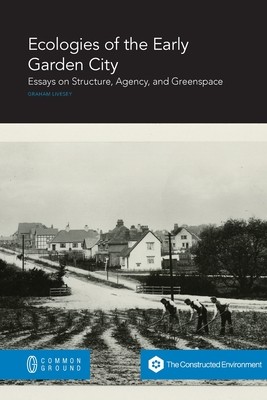
- We will send in 10–14 business days.
- Author: Graham Livesey
- Publisher: Common Ground Research Networks
- Year: 2020
- Pages: 174
- ISBN-10: 1863351280
- ISBN-13: 9781863351287
- Format: 15.6 x 23.4 x 1 cm, minkšti viršeliai
- Language: English
- SAVE -10% with code: EXTRA
Reviews
Description
This is a study of the inaugural decade (1903-1913) of the first Garden City at Letchworth, in Hertfordshire, employing theories derived from landscape ecology and assemblage theory. The early Garden City movement, as represented by the writings of Ebenezer Howard--particularly his book Tomorrow: A Peaceful Path to Real Reform (1898)--was a concerted attempt to redefine many urban practices. The Garden City strove to unite town and country through the garden, it emerged as a direct response to what were perceived to be the evils of the large industrial cities of the nineteenth century. The field of landscape ecology provides a structural method for examining the behavior of landscapes, by focusing on flow, patch, and boundary systems. These are examined in the urban context, along with the broad topic of agency. Ecological factors are complemented by Gilles Deleuze and Félix Guattari's concept of "assemblage," with its emphasis on territorial, cultural, and formal factors. This provides the material for a study of the theories of Ebenezer Howard and the early history of Letchworth Garden City. This includes exploring the central role of gardens, farms, and the greenbelt in the Garden City model, along with agents such as the gardener, farmer, and manager. The Garden City also pioneered modern town-planning, and contributed in such areas as planned neighborhoods, housing design, streetscape composition, architectural controls, controlled growth, urban zoning, greenspace organization, and regional responsiveness.
EXTRA 10 % discount with code: EXTRA
The promotion ends in 22d.15:02:25
The discount code is valid when purchasing from 10 €. Discounts do not stack.
- Author: Graham Livesey
- Publisher: Common Ground Research Networks
- Year: 2020
- Pages: 174
- ISBN-10: 1863351280
- ISBN-13: 9781863351287
- Format: 15.6 x 23.4 x 1 cm, minkšti viršeliai
- Language: English English
This is a study of the inaugural decade (1903-1913) of the first Garden City at Letchworth, in Hertfordshire, employing theories derived from landscape ecology and assemblage theory. The early Garden City movement, as represented by the writings of Ebenezer Howard--particularly his book Tomorrow: A Peaceful Path to Real Reform (1898)--was a concerted attempt to redefine many urban practices. The Garden City strove to unite town and country through the garden, it emerged as a direct response to what were perceived to be the evils of the large industrial cities of the nineteenth century. The field of landscape ecology provides a structural method for examining the behavior of landscapes, by focusing on flow, patch, and boundary systems. These are examined in the urban context, along with the broad topic of agency. Ecological factors are complemented by Gilles Deleuze and Félix Guattari's concept of "assemblage," with its emphasis on territorial, cultural, and formal factors. This provides the material for a study of the theories of Ebenezer Howard and the early history of Letchworth Garden City. This includes exploring the central role of gardens, farms, and the greenbelt in the Garden City model, along with agents such as the gardener, farmer, and manager. The Garden City also pioneered modern town-planning, and contributed in such areas as planned neighborhoods, housing design, streetscape composition, architectural controls, controlled growth, urban zoning, greenspace organization, and regional responsiveness.


Reviews